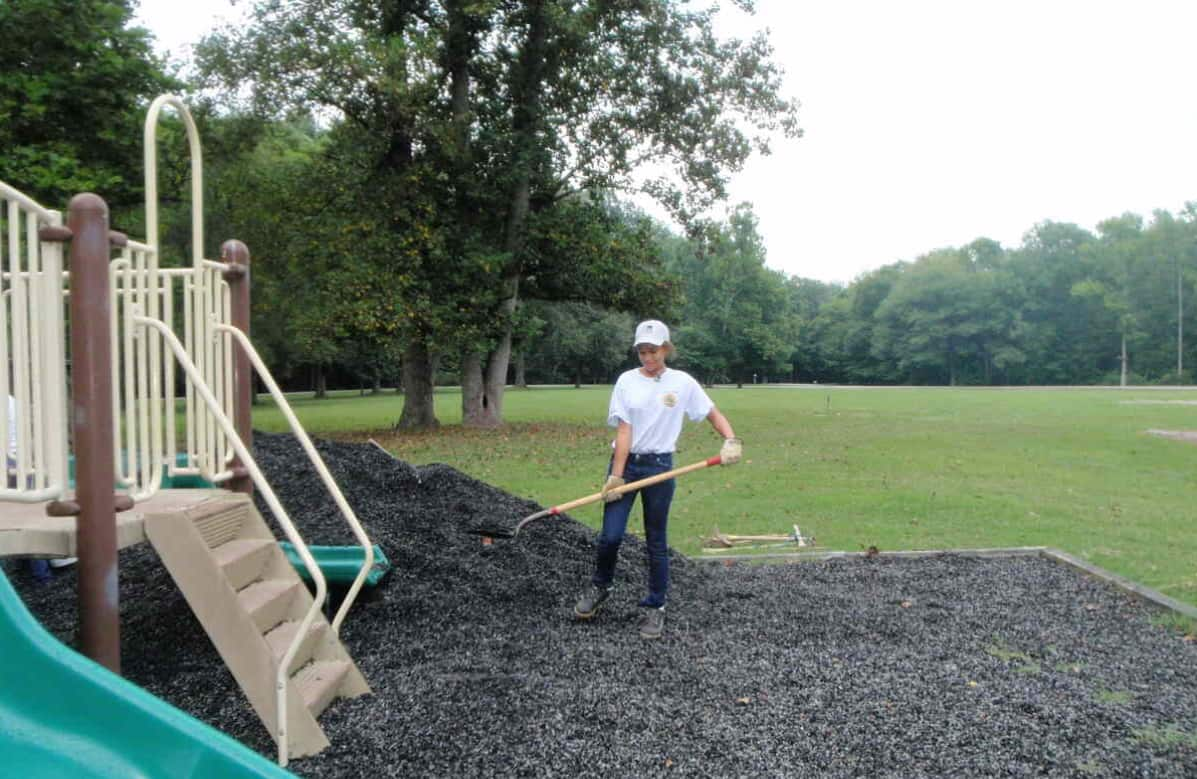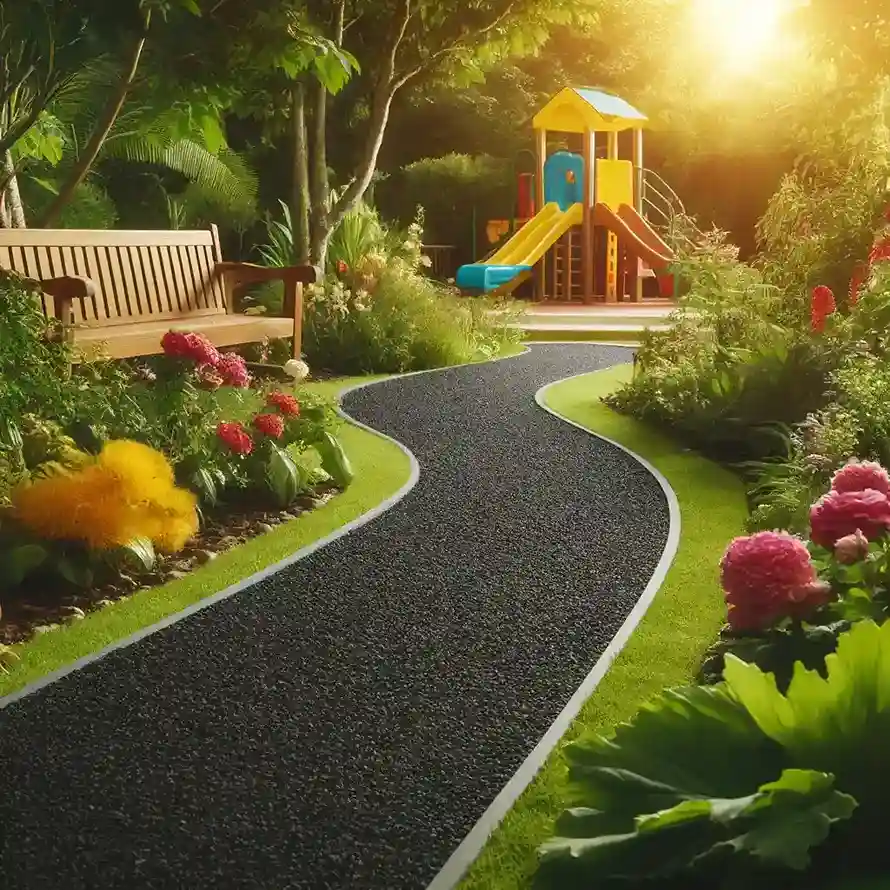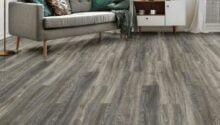When it comes to landscaping or creating a safe space for kids to play, finding the right mulch can feel overwhelming. Among the many options, rubber mulch often stands out. It’s marketed as eco-friendly, long-lasting, and low-maintenance—basically one of the most versatile options among mulches.
But like anything else, it has its drawbacks too. So, is rubber mulch really the answer to your landscaping needs, or should you think twice before committing? Let’s break it all down.

What Is Rubber Mulch and Why Is It So Popular?
A Brief Overview
Rubber mulch is exactly what it sounds like—shredded pieces of recycled tires, repurposed into a ground cover. You’ve probably seen it on playgrounds or in sports fields, but it’s also becoming popular in home gardens and landscaping projects.
The Making and Uses of Rubber Mulch
Crafted from recycled rubber, typically sourced from tire waste, rubber mulch serves as a sustainable solution for various applications. It’s not just a pretty face in your garden; it’s an effective tool for suppressing weeds, retaining soil moisture, and regulating temperature—keeping soil cool in summer and warm in winter.
Variety and Installation
Available in nugget or shredded form, rubber mulch also comes in pre-rolled sheets and rings designed for wrapping around trees and shrubs. These options make it versatile enough for different landscaping needs. However, careful planning is advised before installation. Once laid down, it’s challenging to move, so consider plant placement carefully to avoid having to cut into your mulch unnecessarily.
Whether you’re aiming to enhance your garden’s aesthetic or provide a safe, cushioned surface for children at play, rubber mulch offers a durable, long-lasting alternative to traditional mulch options.
Why People Love It
One big reason rubber mulch is so popular is its eco-friendly pitch. Recycling old tires (290 million of them every year!) into something useful sounds like a win for the environment.
On top of that, it’s extremely low-maintenance, which appeals to anyone tired of constantly reapplying wood chips or fighting off weeds.
The Shiny Side: Pros of Rubber Mulch
Let’s start with the good stuff. Rubber mulch has a lot going for it, and it’s easy to see why people are drawn to it.
Long-Lasting and Practical
Rubber mulch is highly durable. Unlike wood mulch, which breaks down and needs replacing every year or two, rubber mulch can last up to 20 years. It doesn’t decompose, which means less work for you. Plus, it comes in different colors, giving your garden or play area a neat, polished look.
Pest-Free and Weed-Resistant
If you’ve ever battled weeds or worried about termites taking over your yard, rubber mulch might be a practical solution to common yard problems. Its dense structure blocks weed growth and doesn’t attract pests like carpenter ants or termites. However, it’s important to note that other pests such as Asian cockroaches, mice, and more might still pose a problem.
Plant Health Concerns
Unlike wood mulch, rubber mulch doesn’t decompose and add nutrients to the soil. If you’re trying to create rich, healthy soil for your plants, rubber mulch won’t do you any favors. In fact, it may cause contamination to the soil and rob it of nitrogen, a crucial nutrient that certain plants need to thrive. This could be detrimental to plant health over time, particularly for those aiming to maintain a nutrient-rich garden.
Questionable Safety for Kids and Athletes
While it cushions falls, rubber mulch raises concerns for children and athletes exposed to it for long periods. Some worry about the chemicals in tire rubber, which could pose long-term health risks. This makes it a less ideal choice for playgrounds and sports fields where safety and health are top priorities.
Wind- and Water-Resistant
Rubber mulch is resistant to displacement by wind or storms, and it doesn’t absorb water, so it dries quickly. This makes it ideal for places with heavy rain or strong winds.
Eco-Friendly Benefits
Here’s a big one: rubber mulch helps keep millions of old tires out of landfills. Repurposing those tires reduces waste and supports recycling efforts, which is an additional environmental benefit for anyone going green.

The Dark Side: Cons of Rubber Mulch
But every shiny coin has a flip side. While rubber mulch has its perks, it’s not without its flaws.
Toxicity and Environmental Concerns
Rubber mulch isn’t entirely innocent when it comes to safety. Studies show it can release harmful chemicals like zinc and lead into the soil over time. This is a particular concern for gardens where you grow food or where kids spend a lot of time.
Flammability Hazards
Here’s a scary thought: rubber mulch is highly flammable. Once it catches fire, it burns at very high temperatures and can release toxic fumes. This makes it risky for areas near barbecues, fire pits, or even cigarettes.
No Nutritional Value
Unlike wood mulch, rubber mulch doesn’t decompose and add nutrients to the soil. If you’re trying to create rich, healthy soil for your plants, rubber mulch won’t do you any favors.
Questionable Safety for Kids and Athletes
While it cushions falls, rubber mulch raises concerns for children and athletes exposed to it for long periods. Some worry about the chemicals in tire rubber, which could pose long-term health risks.
Less Durable than Initially Marketed
Rubber mulch is durable, but it’s not indestructible. Over time, microbes in the soil can break it down, and UV rays can cause it to fade and degrade.
| Pros | Cons |
|---|---|
|
|
Rubber mulch has a steeper initial price tag compared to organic mulch. You might find yourself paying up to three times more. However, this upfront investment has its merits. The longevity of rubber mulch, thanks to its slow degradation, can make it more cost-effective in the long term.
Additionally, installing rubber mulch requires laying a substrate, such as geotextile landscape fabric, to keep it separate from the soil. This extra step adds to the initial cost but reinforces its long-term benefits by reducing maintenance needs and extending its lifespan.
Consider these factors carefully when weighing the initial expense against the potential savings over time.
What Are the Potential Health Risks Associated with Rubber Mulch?
Rubber mulch, frequently used for playground surfaces and landscaping, poses several health concerns that merit attention. One significant issue is the release of volatile organic compounds (VOCs). These chemicals can evaporate into the air, and exposure to them is potentially harmful. There’s a body of research linking VOCs to serious health conditions such as cancer and neurological disorders.
Moreover, when used in playgrounds, rubber mulch can break apart underfoot. These small pieces may inadvertently end up in children’s mouths, raising concerns about ingestion. This accidental consumption of rubber bits can be a health risk for young children who are often curious and inclined to explore their environment orally.
In summary, while rubber mulch is widely used for its durability and shock-absorbing qualities, it’s essential to weigh these benefits against the potential health risks, particularly concerning VOC exposure and the ingestion of rubber particles.
Does Rubber Mulch Emit an Odor?
Yes, rubber mulch can emit an odor, primarily when temperatures soar. This scent is similar to that of new tires, and it’s generally more noticeable during hot weather conditions.
Factors Affecting Odor Levels
- Heat: The smell intensifies with higher temperatures due to the release of volatile compounds from the rubber.
- Quality: Higher quality recycled rubber mulch, often from reputable manufacturers, might have less odor due to superior production techniques.
- Ventilation: Adequate air circulation can help reduce the lingering scent in your garden.
While some homeowners find the smell off-putting, others believe it’s a small trade-off for the benefits rubber mulch offers, such as durability and low maintenance. As always, it’s best to weigh these considerations based on your climate and personal preferences.
Weighing the Options: Is Rubber Mulch Worth It?
Choosing the right mulch for your space requires careful consideration of several factors. Are you primarily concerned with costs, or does the appearance of the mulch hold more weight? Perhaps potential soil contamination is a deal breaker for you. Each of these considerations plays a crucial role in selecting the ideal mulch.
When Rubber Mulch Works Best
Rubber mulch excels in specific scenarios. If you’re looking for a low-maintenance option that won’t blow away in the wind, it’s a great choice. It’s also ideal for high-traffic areas like playgrounds, pathways, or spots prone to pests.
When to Think Twice
If you’re landscaping a garden with nutrient-hungry plants or if you’re worried about soil contamination, rubber mulch might not be the best fit. The flammability risk is another factor to consider, especially if you love outdoor grilling or live in a wildfire-prone area.
Balancing Pros and Cons
Ultimately, you’ll need to weigh the pros and cons to make your most informed decision. Consider what factors are most important to you and how rubber mulch aligns with those needs. Whether it’s cost-effectiveness, aesthetic appeal, or environmental impact, understanding these aspects will guide you toward the best choice for your landscape.
How Does Rubber Mulch Compare to Regular Mulch?
When deciding between rubber and regular mulch, it’s essential to weigh the benefits and drawbacks of each to determine which best fits your landscaping needs. Let’s dive into the details:
Cost and Longevity
- Rubber Mulch: Typically priced around $11 per cubic foot, rubber mulch is a more expensive initial investment. However, it boasts a lifespan of up to 10 years, saving you from frequent replacements.
- Regular Mulch: More budget-friendly at approximately $3 per cubic foot, but it requires replenishment every year or two, which adds to long-term costs.
Impact on Plant Health
- Rubber Mulch: While it offers low maintenance, there’s a potential risk of soil contamination due to heavy metals leaching, which could affect plant health adversely.
- Regular Mulch: It enriches the soil but may absorb vital soil nutrients like nitrogen, which could be detrimental to certain plant types, such as vegetables.
Environmental Concerns and Safety
- Rubber Mulch: Known for being highly flammable, making it unsuitable in areas with fire hazards or where smokers are present.
- Regular Mulch: Presents a moderate fire risk, making it a safer option for many environments.
Pest Management
- Rubber Mulch: Generally resists pests, but might attract Asian cockroaches.
- Regular Mulch: Can become a haven for various pests, including termites, carpenter ants, and mice, posing potential challenges for garden maintenance.
With these considerations in mind, choosing between rubber and regular mulch depends largely on your priorities—be it longevity, initial cost, environmental impact, or safety. Understanding these factors can help ensure a decision that aligns with both your gardening goals and environmental values.
How to Install Rubber Mulch
Installing rubber mulch can transform your outdoor space, providing a safer and more attractive area. Follow these steps to ensure a successful installation:
Preparing the Site
- Clear the Area:
- Remove all existing grass, wood chips, rocks, stumps, and any other debris. This creates a clean slate, crucial for a smooth installation.
- Grade for Drainage:
- Ensure the area is properly graded to facilitate drainage. Good drainage is key to preventing water buildup and prolonging the life of your mulch.
Laying the Foundation
- Use Landscape Fabric:
- Opt for a commercial-grade geotextile fabric. This fabric helps with filtration, drainage, separation of soil layers, reinforcing and stabilizing the ground.
- Secure the Fabric:
- Overlap the fabric seams by at least three inches to avoid gaps.
- Secure the fabric thoroughly along the edges and around installed equipment to prevent shifting.
Installing the Mulch
- Consider a Retaining System:
- If your project involves installing mulch above ground level, ensure you have a retaining system in place. This keeps the mulch in its designated area and enhances aesthetic appeal.
- Spread the Mulch Evenly:
- Lay the rubber mulch evenly across the prepared area. Aim for a consistent depth appropriate for safety, especially in play areas. Typically, 3-4 inches provides ample coverage and protection.
Finishing Touches
- Check and Adjust:
- Once the mulch is laid out, walk over the area to identify any uneven spots. Adjust as necessary to ensure an even surface without bumps or dips.
By following these steps, you’ll create a functional, visually appealing, and durable area with rubber mulch, whether for play or landscaping purposes.
Where to Find Rubber Mulch and What to Look For
If you’re ready to give rubber mulch a try, make sure to do your research. Look for trusted brands that offer clean, wire-free products to avoid safety hazards.
If accessibility is a concern, check for ADA-compliant options, which are great for playgrounds and public areas. And don’t forget to compare costs—it’s pricier upfront than wood mulch but may save money in the long run.
Conclusion: The Final Verdict on Rubber Mulch
Rubber mulch has some impressive benefits. It’s long-lasting, low-maintenance, and keeps tires out of landfills. For playgrounds or areas where you want a clean, polished look without constant upkeep, it’s a solid choice.
But it’s not perfect. Concerns about toxicity, flammability, and lack of nutritional value for plants can’t be ignored. If safety and soil health are top priorities, you might want to consider other options.
Key Takeaways:
- Choose rubber mulch for durability, pest resistance, and playground safety.
- Avoid it for gardens or areas near fire risks.
- Weigh the pros and cons carefully based on your needs.
Ultimately, the decision comes down to your priorities. If low-maintenance and long-lasting appeal are what you’re after, rubber mulch could be the perfect solution for you. Just make sure you’re aware of its limitations before you buy.


